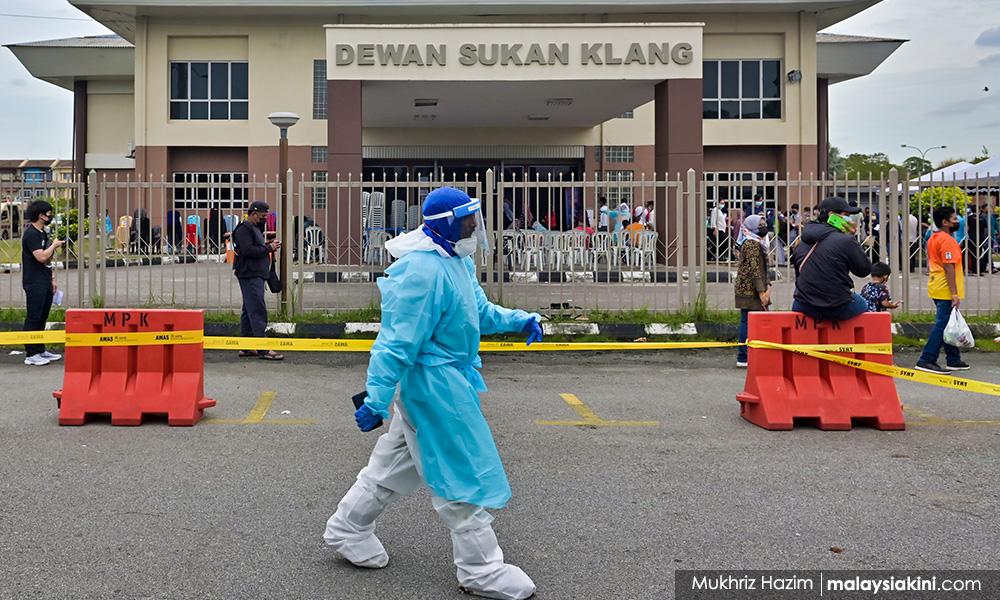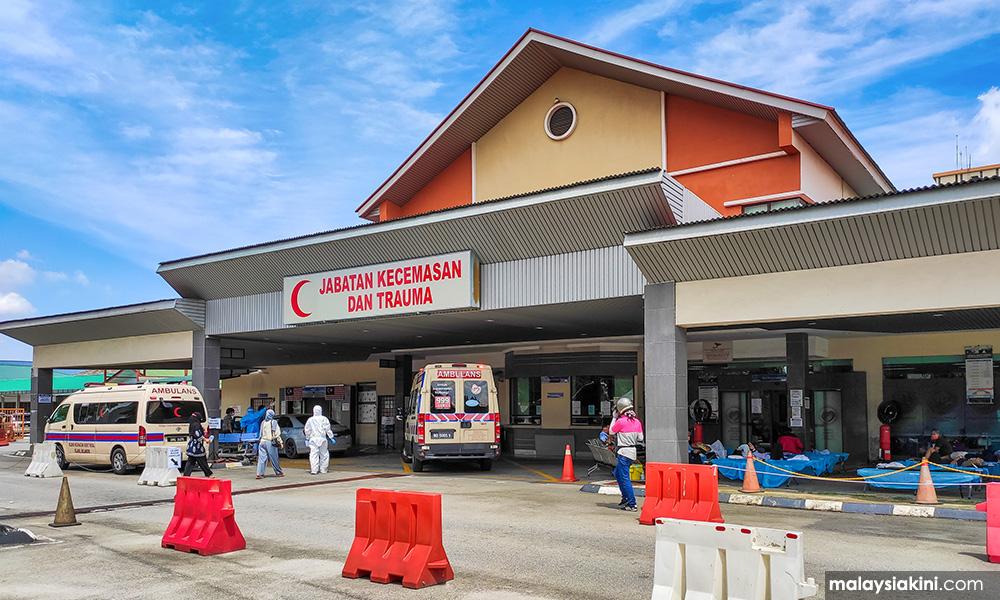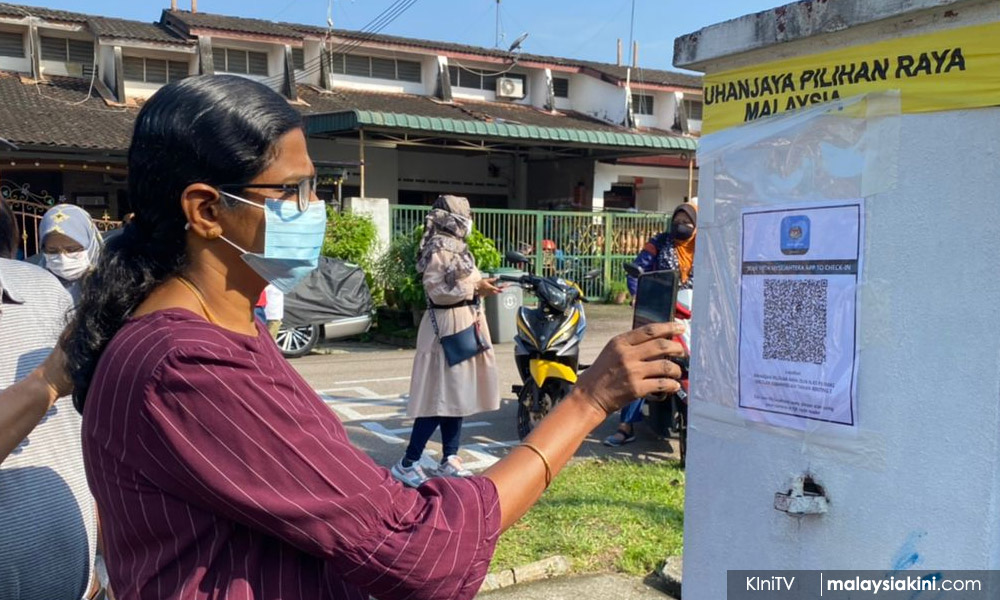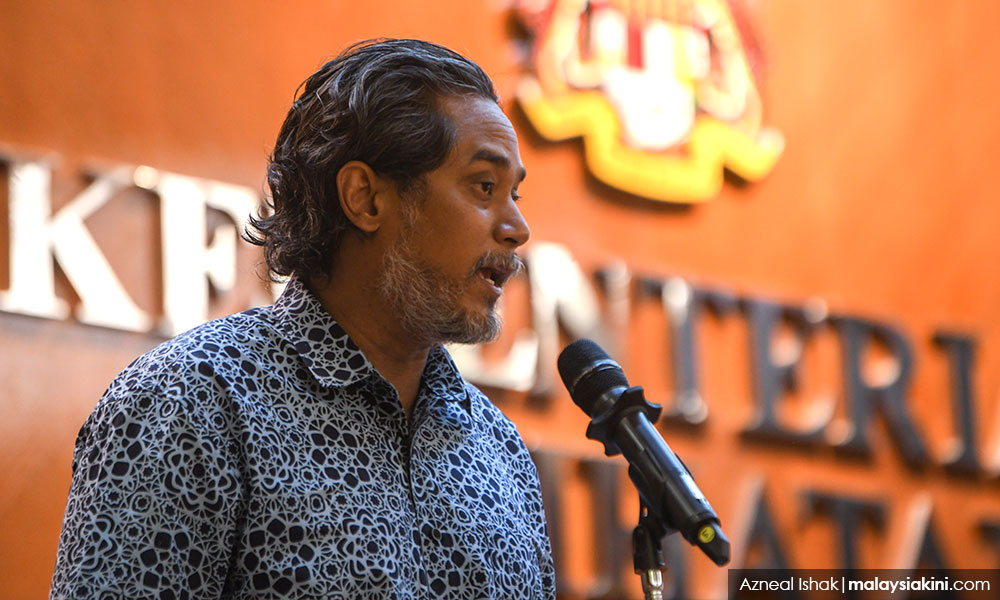(Editor’s Note: The following is a speech delivered at the Health Policy Summit in Kuala Lumpur this morning. Part of the preamble is not published in the interest of brevity.)
Some of you will be aware of the government’s intention to table a Health White Paper in order to secure parliamentary agreement and commitment toward future-proofing Malaysia’s healthcare system.
This is admittedly a broad brief and naturally, many of you will have questions and expectations on the scope and depth of the Health White Paper under development.
Based on the evolution of the country’s health system and the systemic challenges we face today, I would like to outline and clarify the context, scope and ambition of the Health White Paper, with the hope that we may all work constructively together to develop the right set of key reforms.
System paradigm shift
The healthcare system has come a long way since Independence, and we have made substantial progress in achieving good outcomes on many health indicators and in providing affordable universal health coverage.
Our experience in improving the health outcomes of the population by providing high-quality and accessible health services has been recognised by the UN Development Programme as a model for low- and middle-income countries to follow.
However, the health-seeking model we have inherited from the time of Independence has changed very little over the past 65 years.
The health model today is still premised on a predominantly curative lens, responding after the fact to illness, disease and infirmity. We do not sufficiently anticipate the future.
Patients will usually wait until they are very unwell before actively seeking care from the doctor, often at fairly advanced and chronic stages in the case of non-communicable diseases or NCDs. Medical and medical-related professionals spend most of their time caring for patients when seriously symptomatic.
The health system only marginally tackles and corrects underlying problems, rooted in environmental, socioeconomic and behavioural factors.
As a result, based on the National Health and Morbidity Survey (NHMS), there has been an increase in chronic diseases since 2011. The 2019 numbers show that one in five adults have diabetes, three in 10 adults have hypertension, and four in 10 adults have elevated cholesterol levels. These rates are some of the highest in Asean, making Malaysia one of the unhealthiest nations in the region.
We face a devastating outcome because of our unhealthy lifestyles. Currently, one in two Malaysian adults are overweight or obese and one in four Malaysian adults are not physically active.
There are also about 4.8 million Malaysians above 15 years old who smoke. In fact, according to the 2016 Tobacco & E-cigarette Survey among Malaysian Adolescents, a staggering 600,000 Malaysian children between 13 and 19 have taken up e-cigarettes.

All these risk factors are driving the so-called epidemic of diabetes and cardiovascular diseases.
As of 2017, the direct health cost and loss of productivity due to chronic diseases have been estimated to cost Malaysia RM22.53 billion, which is nearly 40 percent of our total expenditure on health.
We are also an ageing nation. It is projected that by 2040, people aged 65 and above will rise to 14.5 percent of the total population.
With the considerable improvements in our health system, Malaysians are now living longer but not necessarily in better health. And as the number of elderly persons increases, so will chronic diseases.
If unhealthy lifestyles continue, it is estimated that people will spend 9.5 years of their life expectancy in poor health. The demand for long-term care would increase which would put pressure on our country's limited health resources even further.
With the current trajectory of our health system, we are unprepared for the complexity of providing adequate care for the elderly with its unique problems that extend beyond health care to social care.
These challenges have been slowly building up over the decades but none were revealed as starkly by the Covid-19 pandemic as the problem of mental health, a hidden chronic disease crisis.
Even before the pandemic, mental ill health had been the leading cause of disability in Malaysia since 1990. Globally it comes in second only to cardiovascular disease.
This is only the tip of the iceberg. According to the World Health Organization, there was a 25 percent increase in anxiety and depression during the Covid-19 pandemic, which reflects the scale it imposes on society, productivity, learning and daily life.
So, what does all this mean for the future of the Malaysian health system? Like many other countries worldwide, the health and social systems are struggling to meet the current health needs of the people.
These trends – increasing NCDs, unhealthy ageing and negative mental health – will continue to be with us, putting increasing pressure on our health system unless we review the system’s fitness for purpose.
Ultimately, we need to move away from “sick care” to health care and wellness.
Our ultimate goal should be to ensure that all Malaysians, no matter who they are or how old they are, can live long and healthy lives. And to achieve this by protecting public healthcare as a fundamental public good in Malaysia, available virtually free to anyone who chooses to access it with quality of care similar to, if not better, than for those who choose to pay for healthcare privately.
The challenge for us as a nation is, in 10 years, how can we see 10 million Malaysians become healthier than they are today? That will be the big outcome of the White Paper.
How can we create a system with the resources to keep 10 million Malaysians healthy and out of hospitals over the next 10 years. The way we think about the role of the healthcare system needs to change, which brings me to the first systemic challenge that the Health White Paper must address.
Transforming first line of defence, primary health care
In order to move from “sick care” to health care and wellness, the Health White Paper will need to address the imbalance in resource allocation, organisation and policy focus between primary health care and hospital care.
Serving the people’s needs in the health continuum, from health promotion, to disease prevention, to treatment, rehabilitation and palliative care should be initiated as early as possible, where relevant, and should be delivered as much as possible within the community. In other words, primary healthcare needs to be highly prioritised.
Based on global experience, investing in primary health care has demonstrated improvements in health outcomes, helping to reduce the overall cost of care, enhance equity and access, and to some extent reduce the adverse impact of social inequalities on health.
As we have also seen during the Covid-19 pandemic, countries with robust primary health care systems were able to respond better and faster to the pandemic, maintaining essential services with minimal disruption.
Malaysia pivoted as well by using Covid-19 assessment centres (CAC) at our government clinics and private GPs in the community to manage asymptomatic and mildly symptomatic patients, avoiding further congestion of the already overloaded hospitals.

Primary health care needs to be viewed as the cornerstone of the health system, bringing care closer to the people and the community, as well as the primary line of defence in addressing demographic challenges, changing disease patterns and increased environmental hazards.
Key systematic reforms need to be geared towards making primary health care services in Malaysia capable of providing whole person care throughout their lifespan, not just for a set of specific diseases. Now, more than ever, is the time to have a renaissance in primary health care.
Primary health care should help to address the broader determinants of health, shifting from a disease-oriented model to a person-centred wellness approach.
Primary health care should take on more services that can be managed in the community but are currently being provided in hospitals such as certain disease management, rehabilitation and palliative services. And most importantly, primary health care providers should be the first point of contact for people to receive and consult on health services, especially promotive and preventive care.
This will also have a tremendous impact on hospital services that can be freed up, decongested and allowed to focus on complex curative cases.
Primary care services must also work more closely with other sectors as many chronic conditions and, of course, the elderly need both medical and social support.
To be effective, primary care services must be supported by sufficient resources, such as family health teams, that engage their communities as equal partners in promoting and maintaining health.
The health workforce will need to be diversified as well, with new cadres created in community-based health and social care, including informal carers or volunteers.
As you may appreciate, reforms to address the imbalance between primary care and hospital care will have a far-reaching impact and will require more detailed work in the coming years, but for the purposes of Health White Paper, we must be aligned on the key principles of this change.
Key learnings from past and current initiatives, whether within Malaysia or externally, should be shared and I look forward to hearing about these in the upcoming panel sessions.
Reducing dichotomy, increasing partnership
At the same time, we must address the maldistribution of equipment, capacity and skill mix between the public and private sectors in the healthcare system, which contributes to gaps in coverage across state and urban-rural lines.
This brings me to the second systemic challenge that the Health White Paper must address.
The Malaysian healthcare system is dichotomous, with a primarily tax-funded public sector on the one hand and fee-for-service private sector providers on the other, covered by out-of-pocket payments or for-profit private insurance.
The public health sector caters to two-thirds of out-patient and inpatient cases. The lack of partnership and integration between the public and private sectors means that the public sector is continuously and increasingly stretched, sometimes to near breaking point as vividly demonstrated during the peaks of the Covid-19 pandemic.

Apart from a maldistribution of resources, the dichotomy of the healthcare system has also meant that information is not easily shared, leading to delays in diagnosis and treatment, unnecessary repeated investigations and added costs.
Resources across the public sector and private sector, needs to be more effectively and efficiently utilised. Less dichotomy and more partnership or integration will reduce pressures on public sector facilities to cope, while increasing access for patients and hopefully facilitating seamless flow of care between providers, be they in the public, private or non-profit sector.
Part of this work requires the sharing of patient records across facilities and providers, and towards this end, initiatives to pilot and scale up electronic medical records will be critical. But another piece of the public-private integration issue is the question of strategic procurement of services.
Quite naturally, there is great interest over strategic procurement and outsourcing, particularly from private sector service providers.
However, there is also concern from health system observers on whether this would lead to medical cost inflation. We note these viewpoints and consider them seriously.
The Health White Paper would ultimately weigh the merits of viewpoints against global evidence and outline the most feasible principles of reform towards addressing the maldistribution of workloads across public and private providers, and to ensure resources across the public sector and private sector are optimally utilised.
Matching increasing demands with optimal funding
On a very related note, we cannot consider reform without understanding the funding aspect of the health system. How the system is financed plays a vital role in transforming the health system, affecting everything from the sufficiency of infrastructure to the number of healthcare workers.

Coming out of the pandemic, we know and recognise that the public healthcare system is chronically underfunded against the increasing demands of NCDs, an ageing population and the emergence of new communicable diseases.
Malaysia's total public spending on health is relatively modest, at 2.58 percent of the GDP in 2020. In contrast, the WHO recommends that public health spending should be at least 5 percent of GDP to ensure adequate financial risk protection for the people.
We should be progressively moving toward this recommendation and benchmark ourselves with other upper-middle countries.
Now, while it’s safe to say that the question of increasing our healthcare funding has fairly broad support, how the funding model should be structured, the sources of funding and how healthcare funding should be governed has been the central debate of Malaysia’s health system reform for decades.
We need to break the impasse and move forward. The various healthcare funding mechanisms in the country needs to undergo transformation, and these include private health insurance, employment-based health benefits, and government funding for health and social care.
We need to consider a long-term solution for healthcare funding where all parties share responsibilities for the health needs of the population.
The Health White Paper should pave the way for the development of a robust healthcare funding model, which will be a highly detailed and technical endeavour.
At this juncture however, I would like to state that the Health White Paper is focused on securing long-term change which, in this current economic, fiscal and political climate, demands a gradual and adaptive approach.
As such, we are considering gradually increasing the healthcare budget up to targeted levels over a number of years while working out funding structures to make the system more sustainable and progressive.
Let me be very clear so that social media does not take me out of context: as Health Minister who is committed to healthcare as a public good, I want to increase the annual budgetary allocation for public healthcare to 5 percent of GDP over the next few years. And that increase must be ring fenced in every subsequent budget.
Above and beyond that, we should discuss other long-term solutions. It is not either one or the other.
Promotive and preventive care
All too often, we focus mainly on treating and ensuring that chronically sick people become healthy again. This should not be the case, the health system should concentrate on keeping people healthy to begin with.
It is increasingly recognised that to improve and maintain the health and wellbeing of the people we need to go beyond healthcare.
Studies have demonstrated that medical care only contributes to 20 percent of the health outcomes of the people. The largest share is contributed by social determinants such as education,housing, transportation, agriculture, and the environment.
These affect how people experience the world and the choices they make. When any of these conditions pose a challenge to people, they become risk factors that will impact health and wellness.
Advice and health promotion campaigns are not enough when there are structural obstacles in the way of better public health outcomes. Community empowerment, albeit challenging, is very crucial in making sure that no one is left behind.
The government today has begun efforts through initiatives such as Agenda Nasional Malaysia Sihat which aims to encourage a healthy lifestyle as well as Peka B40 – a free health screening for the low-income group, which was launched in 2019.

But much more needs to be done. We need to get serious about social determinants of health and ensure there is “health in all policies” of the government.
The White Paper will need to challenge every aspect of government to think of health outcomes if we are to succeed in keeping Malaysians healthy.
We need to tackle poverty as a negative determinant to good health and similarly provide quality education, equitable access to services for all, protect the environment, fight and reverse climate change, ensure food and nutritional security, plan for more green, safe, open and livable spaces in our cities and towns, clean our waterways and water supplies and allow every person the potential to live a fulfilling and dignified life.
At the same time, we also have to look at health determinants at the personal level such as lifestyle and behaviour. These include risk factors such as smoking, substance use, diet and exercise, to name a few.
In Malaysia, cigarette smoking is the leading cause of preventable morbidity and mortality. It leads to an increased risk for cardiovascular disease, the leading cause of death in the country. Non-smokers exposed to second-hand smoking are at equal risk.
Based on all this information, we have made the case that the health cost to the society and country far outweighs the tax revenue gained.
The e-cigarette and vaping industry is often underestimated but e-cigarettes in fact comprise 42 percent of the tobacco market share. We are seeing increasing cases of Evali (e-cigarette or vaping use associated lung injury) with the prevalence of these devices.
There is also the additional possibility of this being a gateway habit to cigarette smoking particularly among the very young. Society must have a serious and committed approach to protecting our younger generation from tobacco across the life course.
As you are all aware by now, I have brought to Parliament a landmark legislation to prohibit anyone born in 2007 from using any smoking product. If passed and enforced effectively, it will result in significantly better health outcomes for many years to come.
While the idea is not new, let's make Malaysia the first country in the world to enact a tobacco generational end game.
I know that some believe that banning is never the solution. However, I think this presents the right opportunity to finally put the smoking problem in its rightful place, quite literally, in the ashtray of history.
Reimagining health care with technology
Every time there is a fundamental shift, or when we try to introduce new ways of doing or approaching things, there will always be resistance. Changing traditional norms of acting and behaving is hard. I believe we can humanise healthcare to be more person-centred and acceptable to younger generations through technology transformation.
With such innovations, it is also possible to make healthcare accessible and affordable for everyone. That means harnessing our smartphone penetration in the country to start addressing the urban-rural and socioeconomic divide by using telehealth, virtual clinics and remote patient monitoring to improve care without always requiring the patient to attend physically.
But what if we also use technology for promotion and prevention, thinking about our health in a much more holistic sense?
We are already taking advantage of the MySejahtera app which has 30 million users. To go beyond Covid-19 tracking and vaccination, we are now storing children's immunisation records securely, health screening records and providing real-time data on outbreaks of infectious diseases around us.

I envision a "light" portable electronic health record on the app that could be taken to various healthcare providers and to book medical check-ups for chronic diseases. Moving forward, the ministry is also planning to offer various health services such as health trends, health appointments, teleconsultation, blood donation information, organ donation and prescription amongst others.
We could also address primary lifestyle factors - like diet and exercise via technology-based interventions to promote healthy behaviours. This way, we would be in a much better position to tackle some of the root causes of the country's most common health conditions.
New technologies, seminal advances in medicine, and a radical shift in the population's behaviour and norms are coming together. There are new opportunities that can impact many parts of our old healthcare models.
We can fundamentally rethink every challenge – even ones that were previously unchallenged. When you look at it as a whole, we are already witnessing the first significant steps on the journey towards affordable, accessible healthcare for our people through advancements in health technology.
Future of health care not in hospitals
Currently, hospital services constitute a significant part of the patient's experience, which may not necessarily be true in the future. With a fundamental shift from ‘sick care’ to health care and wellness, the health system as we know it today would naturally change.
We will never be able to completely eliminate sickness and disease. However, by using science, data, and technology, we will be able to identify them earlier, intervene proactively, better understand their progression to help people sustain their health and wellbeing and free up resources for critical cases requiring curative care with cutting edge treatment protocols.
This fundamental shift in service delivery and focus will require an organisational change in the healthcare system by integrating public and private delivery of healthcare.
It would require flexibility on the part of both the public and private sectors. It may also see an evolution in the role of the Health Ministry, devolving service delivery in order to focus on public health surveillance, policy development, research, regulation, monitoring, and evaluation.
I am not sure the Health Ministry should continue to be the bureaucratic Leviathan is presently is: the biggest provider, payer and regulator of healthcare. The White Paper will also be an exercise for our own existential reform.
The Covid-19 pandemic has brought into sharp focus the need for health care reforms.
Never before has the interdependence of health, finance, and the social fabric been so visible. Never before has the demand for health care reforms been more apparent for the health and social needs of our people.
Our direction and principles for healthcare reform in the Health White Paper should reflect these imperatives. We should not let the lessons and opportunities of the Covid-19 pandemic pass us by.
The Health White Paper should be our collective statement of intent on how we can make our health system more sustainable and resilient through a "whole of government" and "whole of society" mindset.
Since early this year, the Health Ministry team and I have been actively engaging a wide range of stakeholders to seek proposals on systemic healthcare reform.
I will also appoint a Health White Paper Advisory Council, comprising 13 diverse subject matter experts, to lend their assistance in challenging and refining our policy priorities.
There have been several good inputs from many parties and channels, and I thank everyone who has taken the time to give their considered views.
There are several on-going programs, initiatives and consultative platforms which are working towards addressing many of the issues that have been surfaced.
These established efforts should be continuously strengthened but we also need systemic reforms on how healthcare is delivered, financed and governed.
To secure these long-term changes, the Health White Paper will be focused on the most fundamental reforms to address major systemic and structural challenges faced by the healthcare system rather than a specific disease or an individual demographic group.
While we have been consulting a diverse range of stakeholders in developing the Health White Paper, we need to make sure the plans for reforms are themselves future-proof and critically will outlast any incumbent minister.
Thus bipartisan support for the proposed reforms within the Health White Paper is critical and I hope that we will all play a part in supporting its tabling to Parliament at the end of this year, God willing.

There will still be many details and plans of action that would need to be worked out in the immediate coming years. But your agreement and the agreement of members of Parliament are vital to secure the broad principles and direction of structural reforms for Malaysia's health system.
Not only would this cement the moral and political position for the next 15 years of proposed reforms, but in a larger sense, it would also symbolise our solidarity for a future-proofed healthcare system, no matter who is the Minister of Health or whic party is in power.
To further secure the reforms, the Health White Paper will also propose a Health Reform Commission to independently monitor, advise and report on the status of implementation to the government, the Parliament, and the people.
In having a transparent and well appointed Health Reform Commission, we hope that it will create institutional check-and-balance and ensure follow-through on the reforms, regardless of changes in the political sphere.
Let me end my keynote address by acknowledging all those who have, over the years, contributed to discussing health reform and now the development of the Health White Paper.
Your interest and dedication to the country’s health system are greatly valued. Thank you very much for your kind attention. I wish everyone a fruitful and productive Health Policy Summit 2022.
KHAIRY JAMALUDDIN is the health minister.
The views expressed here are those of the author/contributor and do not necessarily represent the views of Malaysiakini.

